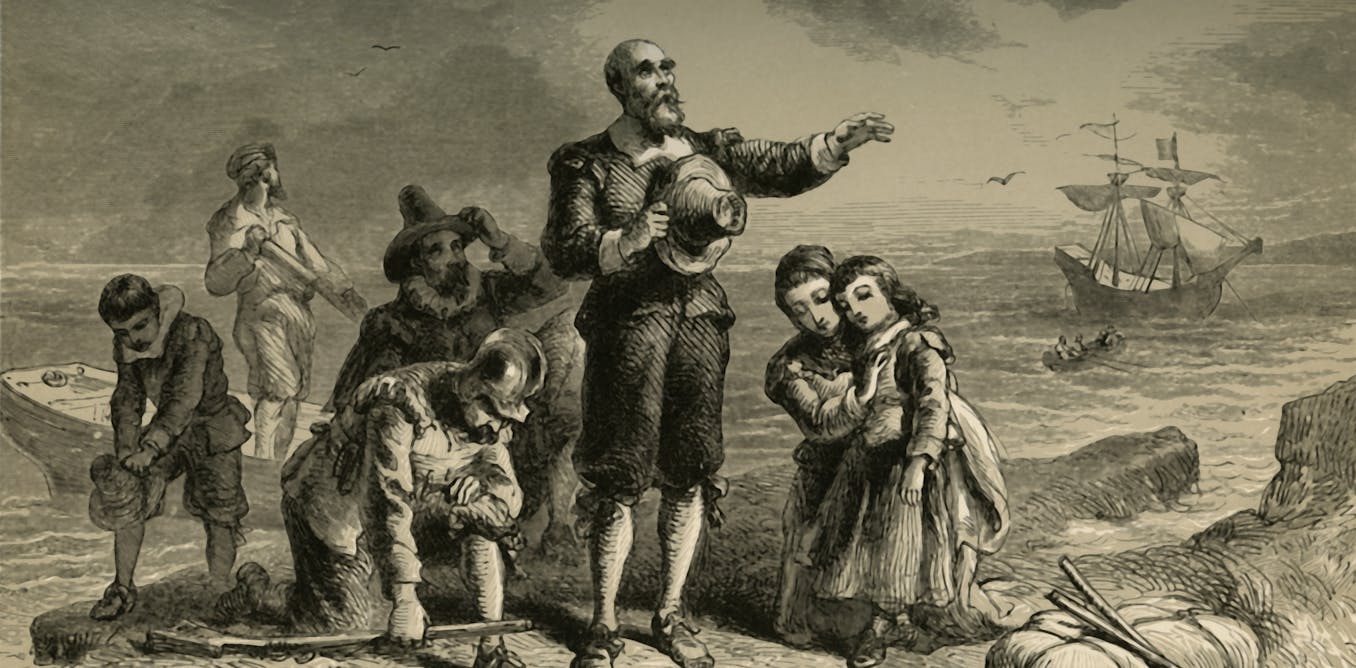Introduction
The story of America’s early colonists often evokes images of austere settlers seeking freedom and forging new lives in the wilderness. Yet, the Pilgrims and Puritans, two of the most prominent groups of settlers, followed dramatically different paths in their beliefs, governance, and relations with Native Americans. By delving into their contrasting religious doctrines and approaches to indigenous communities, we uncover how these groups influenced the early American landscape and their enduring legacies.
Religious Foundations: Pilgrims and Puritans
The Pilgrims’ Pursuit of Religious Freedom
The Pilgrims, a sect of Separatists, sought religious freedom from the Church of England. They believed in complete autonomy from the established church and advocated for individual congregations to manage their affairs. Their journey to the New World in 1620 aboard the Mayflower epitomized their desire to worship freely without interference.
Their religious practices were marked by simplicity, emphasizing personal devotion and humility. The Pilgrims viewed their mission as creating a “holy community,” focused more on survival and spiritual fulfillment than imposing their beliefs on others.
The Puritans’ Quest for Reform
Unlike the Pilgrims, the Puritans were not separatists but reformers within the Church of England. They sought to “purify” the church from perceived corruption and excess. Their migration to New England began in 1630, led by Governor John Winthrop and the Massachusetts Bay Company, envisioning a “city upon a hill” that would exemplify godly living.
The Puritans’ religious ethos emphasized strict moral codes and collective accountability. They sought to establish a theocratic society where church and state were interwoven, fostering a sense of communal responsibility for salvation.
Contrasting Relations with Native Americans
Pilgrims: A Pragmatic Approach
The Pilgrims initially formed alliances with Native American tribes, such as the Wampanoag. With the assistance of leaders like Squanto and Massasoit, they survived harsh winters and learned vital agricultural techniques. The famous 1621 Thanksgiving feast symbolizes this period of cooperation.
However, over time, tensions arose as Pilgrim settlements expanded, straining relations with indigenous groups. Despite this, their interactions were largely defined by negotiation and mutual benefit during their early years.
Puritans: Conflict and Conversion
In contrast, the Puritans often viewed Native Americans as obstacles to their divine mission. Their expansionist policies led to frequent conflicts, including the Pequot War (1636–1638) and King Philip’s War (1675–1678). These violent confrontations decimated Native populations and disrupted tribal structures.
The Puritans also engaged in aggressive missionary efforts, establishing “praying towns” to convert Native Americans to Christianity. While some indigenous people adopted Puritan ways, these efforts often undermined traditional cultural practices, leading to resentment and resistance.
Broader Implications and Legacy
Governance and Community Development
The Pilgrims’ Mayflower Compact laid the groundwork for self-governance in America, emphasizing collective decision-making and social contracts. This early democratic experiment inspired future colonial charters and, ultimately, the U.S. Constitution.
The Puritans’ structured and disciplined approach contributed to the development of robust institutions, including schools and churches. Harvard College, established in 1636, reflected their commitment to education and theological training.
Lasting Impact on Indigenous Communities
The interactions between these settlers and Native Americans reshaped the continent. While alliances and trade fostered brief periods of cooperation, the overall impact of colonization led to profound displacement and cultural loss for indigenous peoples. The Pilgrims’ relative diplomacy contrasted sharply with the Puritans’ aggressive expansionism, highlighting the diverse ways European settlers influenced Native communities.
Conclusion
The Pilgrims and Puritans represent two distinct approaches to faith and colonization in early America. While both groups sought to create societies rooted in their religious ideals, their divergent paths influenced their governance, relations with Native Americans, and contributions to American history. By examining these contrasts, we gain a deeper understanding of how these early settlers shaped the nation’s foundations.
For further insights into early colonial history, explore our comprehensive guide to New England settlement patterns. To learn more about indigenous perspectives during this period, consider visiting Native History Association.
See more The Buzz Live

